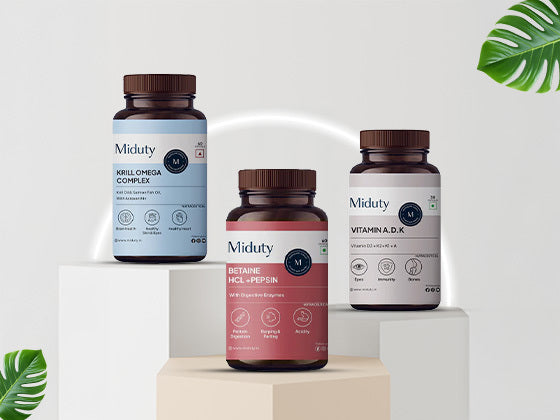Choosing the best sunscreen requires taking into account several elements, including UV protection and the impact on the environment, particularly coral reefs. Based on their active constituents, sunscreens are classified as either physical (mineral) or chemical (organic). This blog will go over both categories, with a focus on reef safety.
Understanding Physical and Chemical Sunscreens

The active components in physical and chemical sunscreens differ, as does how they protect the skin from the sun's harmful ultraviolet (UV) radiation. This blog compares physical and chemical sunscreens. Physical sunscreens create a physical barrier between the skin and the sun. They sit on the surface of the skin and reflect or scatter UV light away from it. These sunscreens are commonly known as "mineral" sunscreens. Organic molecules in chemical sunscreens absorb UV light. These molecules go through a chemical reaction that turns UV radiation into heat, which is subsequently expelled from the skin. Consider your skin type, any sensitivities you may have, and your environmental concerns before selecting a sunscreen. If reef safety is a consideration, choose a "reef-safe" sunscreen or a physical sunscreen. Always read product labels and remain up to date on the latest research on sunscreen ingredients and their effects on skin health and the environment.
Composition and Benefits of Physical Sunscreens
Physical sunscreens, often known as mineral sunscreens, include active mineral components that lie on the skin's surface and provide a physical barrier against ultraviolet (UV) radiation. Zinc oxide and titanium dioxide are the two most common minerals found in physical sunscreens. Here's a closer look at their makeup and the advantages of physical sunscreens:
Composition:
-
Zinc Oxide: Zinc oxide is a white, powdery mineral. UV Protection: It provides broad-spectrum UVA and UVB ray protection. Known for being gentle on the skin, making it suitable for those with sensitive skin. These ingredients are less irritating than some chemical sunscreen ingredients. A reef-safe and environmentally friendly product.
-
Titanium Dioxide: Titanium dioxide is yet another white, powdery mineral. Protects from both UVA and UVB rays. Most people with sensitive skin tolerate it well. Titanium dioxide, like zinc oxide, is considered reef safe.
Benefits:
-
Broad-Spectrum Protection: Physical sunscreens provide all-around sun protection by blocking both UVA and UVB rays.
-
Immediate Effectiveness: Physical sunscreens begin to protect the skin as soon as they are applied because they form a physical barrier.
-
Gentle on Sensitive Skin: Physical sunscreens are suitable for delicate skin because zinc oxide and titanium dioxide are mild and less likely to irritate.
-
Reef Safe: Physical sunscreen minerals like zinc oxide and titanium dioxide, unlike other chemical sunscreen components, are considered reef-safe, making them a preferable choice for environmentally conscious consumers.
-
Stability: Physical sunscreens are more stable in sunlight than chemical filters, which can degrade over time.
-
Reduced Risk of Irritation: Physical sunscreens may be less irritating to those with skin problems such as rosacea or eczema than chemical sunscreens.
-
No Absorption into the Skin: Physical sunscreens sit on the skin's surface and are not absorbed into the bloodstream, which is important for those concerned about sunscreen ingredient systemic absorption.
Consider your skin type, preferences, and any special skin concerns before choosing a physical sunscreen. To maximise sun protection, always follow the product's application and reapplication directions.
How Chemical Sunscreens Work
Chemical sunscreens, also known as organic sunscreens, absorb UV light and convert it to heat, which is then discharged from the skin. These sunscreens' active components are organic (carbon-based) molecules, each with unique capabilities for absorbing distinct wavelengths of UV light. This blog will look at how chemical sunscreens work.
Comparing SPF and UV Protection Levels
UV (Ultraviolet) and SPF (Sun Protection Factor) protection levels are related yet represent separate features of sunscreens. Understanding both can assist you in selecting the best sunscreen for your needs.
-
SPF (Sun Protection Factor): The SPF of a sunscreen indicates how well it protects the skin from UVB (shortwave ultraviolet B) rays. It denotes the degree of protection against sunburn induced by UVB radiation. SPF is computed by comparing the time it takes for skin to burn with and without sunscreen. For example, if your skin burns in 10 minutes without sunscreen, then SPF 30 should provide 30 times that protection (300 minutes). SPF primarily measures UVB light protection, which causes sunburn and contributes to the development of skin cancer. SPF does not provide information regarding UVA ray protection, which is linked to accelerated ageing and can also contribute to skin cancer.
-
UV Protection Levels: A "broad-spectrum" sunscreen protects against both UVA and UVB rays. Look for this designation to assure full protection. Some countries have implemented a UVA protection rating system. In Asia, for example, the PA system (Protection Grade of UVA) is widely used, with rising plus signs signifying greater UVA protection. While SPF primarily refers to UVB protection, higher SPF values frequently correlate with better overall UV protection, including some UVA protection. In some areas, UVA protection is measured using the Persistent Pigment Darkening (PPD) grade. The better the UVA protection, the higher the PPD number.
Remember that no sunscreen offers complete protection and that proper application and reapplication are essential for effective sun protection. Furthermore, choosing sunscreens with high SPF values does not imply that you can spend indefinite amounts of time in the sun; it is always important to be mindful of sun exposure.
The Environmental Impact of Sunscreen Ingredients

The environmental impact of sunscreen ingredients has become a growing concern, particularly about their effects on coral reefs and marine ecosystems. Some sunscreen ingredients have been identified as potentially harmful to aquatic environments. Here are some key considerations regarding the environmental impact of sunscreen ingredients:
-
Reef-Safe Labeling: Look for sunscreens that are labelled "reef-safe" or "reef-friendly." These formulations typically do not contain any potentially harmful ingredients.
-
Mineral Sunscreens: Choose mineral (physical) sunscreens with active ingredients such as zinc oxide or titanium dioxide. These are generally thought to be environmentally friendly.
-
Check Ingredient Lists: Sunscreens containing oxybenzone, octinoxate, and other potentially harmful chemicals should be avoided.
-
Water-Resistant Formulas: Choose water-resistant sunscreens to reduce the impact of runoff.
-
Minimize Use in Sensitive Areas: Use sunscreen with caution in areas with fragile ecosystems, such as coral reefs.
As people become more conscious of the environmental hazards associated with sunscreen, there is a greater emphasis on the development and usage of reef-safe sunscreens. Individuals can help to conserve marine environments by selecting sunscreens with environmentally friendly formulas. It's also critical to stay up to date on new studies and guidelines about sunscreen and environmental impact.
Harmful Effects of Oxybenzone and Octinoxate
Oxybenzone and octinoxate are two chemical sunscreen ingredients that have raised environmental and health concerns. The following are the negative effects of these compounds:
Environmental Impact:
-
Coral Bleaching: Both oxybenzone and octinoxate have been linked to coral bleaching, a phenomenon in which corals lose their vibrant colors and become more susceptible to disease. These chemicals have the potential to disrupt the symbiotic relationship between corals and the algae that live in their tissues, resulting in coral stress and bleaching.
-
Coral Mortality and Growth Inhibition: Studies have shown that oxybenzone can cause coral mortality and inhibit coral larvae growth. Octinoxate has similar effects, including the inhibition of coral growth.
-
Reproductive Disruption: It has been discovered that oxybenzone acts as an endocrine disruptor in corals, affecting their reproductive processes. Octinoxate has been shown to have similar endocrine-disrupting effects.
-
Bioaccumulation: These chemicals can accumulate in aquatic organisms, potentially affecting the entire marine ecosystem.
-
Impact on Other Marine Life: Sunscreen runoff can contaminate bodies of water, affecting fish and other marine organisms. Some studies indicate that it hurts fish behaviour and development.
As the public becomes more aware of the environmental and health consequences of some sunscreen components, there is a greater emphasis on adopting safer alternatives. It is critical to be knowledgeable about sunscreen formulas and make decisions that are compatible with both personal health and environmental conservation aims.
Importance of Reef-Safe Sunscreens
Due to the well-documented environmental impact of certain sunscreen chemicals on coral reefs and marine ecosystems, reef-safe sunscreens are becoming increasingly relevant. Several factors underline the need to use reef-safe sunscreens:
-
Coral Reef Conservation: Coral reefs are extremely sensitive ecosystems, and certain sunscreen chemicals, such as oxybenzone and octinoxate, have been linked to coral bleaching, which can lead to coral reef death. By avoiding harmful ingredients, reef-safe sunscreens help to protect these delicate ecosystems.
-
Marine Biodiversity Protection: When oxybenzone and octinoxate are washed into the water, they can harm a variety of marine organisms, including fish and algae. Reef-safe sunscreens help to preserve marine biodiversity by reducing the negative effects on aquatic life.
-
Endocrine Disruption: Some sunscreen chemicals, such as oxybenzone, can act as endocrine disruptors in corals and fish, affecting their reproductive and developmental processes. Reef-safe sunscreens aid in lowering the risk of hormonal disruption in marine life.
-
Global Reef Health: The environmental impact of sunscreen chemicals has raised global concern, with various regions and countries considering or enacting bans on specific ingredients. Choosing reef-safe sunscreens contributes to global efforts to protect coral reefs.
-
Human Health Considerations: While the primary focus is on environmental impact, there are also concerns about the potential health risks of certain sunscreen chemicals to humans, particularly endocrine disruption. Reef-safe sunscreens are an environmentally conscious option that does not jeopardise personal health.
-
Legislation and Bans: In some areas with sensitive marine environments, legislation has been enacted to prohibit or restrict the use of specific sunscreen ingredients known to be harmful to coral reefs. Using reef-safe sunscreens aligns with these protective measures.
-
Consumer Demand and Industry Response: Growing consumer awareness and demand for environmentally friendly products, such as reef-safe sunscreens, are prompting the sunscreen industry to reformulate products and offer alternatives that are safer for reefs.
-
Eco-Tourism and Recreation: Tourists and beachgoers who use reef-safe sunscreen contribute to sustainable practises in popular recreational areas. This contributes to the beauty and health of coral reefs, thereby supporting eco-tourism initiatives.
-
Education and Advocacy: Choosing reef-safe sunscreens contributes to educational and advocacy efforts aimed at raising awareness about the impact of sunscreen ingredients on coral reefs. It encourages people to make environmentally responsible decisions.
By opting for reef-safe sunscreens, individuals contribute to the preservation of coral reefs and the overall health of marine ecosystems. As the demand for environmentally friendly products grows, the use of reef-safe sunscreens is becoming increasingly important in promoting sustainable practises and protecting the oceans for future generations.
Eco-Friendly Sunscreen Alternatives
Those who want to reduce their environmental impact while preserving their skin from the sun must choose eco-friendly sunscreen alternatives. Mineral (physical) sunscreens, reef-safe sunscreens, natural and organic sunscreens, daily sunscreen, upcycled or sustainable packaging, water-resistant formulas, non-nano particles, biodegradable sunscreen, clothing and accessories, limiting sunscreen use, checking certification labels, supporting sustainable brands, and educating and advocating are some eco-friendly sunscreen alternatives and practices. Individuals can enjoy sun protection while also protecting the environment by using eco-friendly sunscreen alternatives and practices. It is critical to remain informed, read product labels, and make decisions that are consistent with personal values and environmental conservation aims.
Selecting the Right Sunscreen for Your Skin and the Environment

Choosing the best sunscreen requires taking into account both your skin's needs and the potential environmental impact. Here are some pointers to consider when selecting a sunscreen that is safe for both your skin and the environment:
For Your Skin:
-
Determine Your Skin Type: If you have sensitive skin, try a mineral (physical) sunscreen that contains zinc oxide or titanium dioxide, as these compounds are less prone to irritate it. Non-comedogenic (won't clog pores) and oil-free formulas are ideal. Choose a sunscreen that has moisturising elements such as hyaluronic acid or glycerin.
-
Choose the Right SPF: An SPF of 30 is usually adequate for daily activity. Consider a higher SPF if you'll be spending a lot of time outside. A higher SPF may be appropriate if you have fair skin, a history of skin cancer, or live in a high-altitude or high-UV environment.
-
Water Resistance: Choose a water-resistant sunscreen and reapply it as directed on the product label if you plan to swim or sweat.
-
Consider Skin Conditions: Physical sunscreens (zinc oxide or titanium dioxide) are frequently softer on sensitive skin and may be appropriate for acne or rosacea sufferers.
-
Check for Allergens: If you suffer from allergies, look for sunscreens that are hypoallergenic and devoid of common allergens.
-
Cosmetic Appeal: Consider the sunscreen's texture and look. Some people prefer undetectable formulations, while others don't mind mineral sunscreens having a tiny white tint.
For the Environment:
-
Reef-Safe Ingredients: Choose sunscreens that do not contain the coral-harming chemicals oxybenzone and octinoxate. Mineral (physical) sunscreens containing zinc oxide or titanium dioxide are considered reef-safe.
-
Water Resistance: Choose water-resistant sunscreens to limit the possibility of the product washing away in the water.
-
Non-Nano Particles: To reduce the potential impact on marine life, look for sunscreens that contain non-nano zinc oxide or titanium dioxide particles.
-
Biodegradable Formulas: Choose biodegradable sunscreens, which indicate that they degrade more easily in the environment.
-
Avoid Microplastics: Look for sunscreens that do not include microplastics, which can have a harmful impact on the environment.
-
Packaging Considerations: To lessen overall environmental effect, look for sunscreens with sustainable or recyclable packaging.
-
Certifications: Some sunscreens bear certifications from organisations such as the Environmental Working Group (EWG) or other eco-labels, indicating that they meet certain environmental and safety criteria.
-
Educate Yourself: Be mindful of the environmental impact of sunscreen components and select products that correspond with your environmental commitment.
When choosing a sunscreen, you may make an informed decision by considering both your skin's needs and the environmental impact. Remember to reapply sunscreen on a frequent basis, especially if you are going to be outside for an extended period of time, and to combine extra sun protection methods like wearing protective clothes and seeking shade.
Tips for Sensitive Skin and Allergy-Prone Individuals
Individuals with sensitive skin or allergies must exercise special caution while selecting and applying skincare products, including sunscreen. Here are some pointers to help folks with sensitive skin and allergy sufferers choose and apply sunscreen without causing irritation:
-
Choose a Mineral Sunscreen: Choose a mineral (physical) sunscreen that contains zinc oxide or titanium dioxide as active components. When compared to some chemical filters, these are less likely to cause skin irritation.
-
Examine Hypoallergenic Formulas: Look for sunscreens that are labelled "hypoallergenic." These formulations are intended to reduce the likelihood of allergic reactions.
-
Fragrance-Free Sunscreens: Choose fragrance-free sunscreens because fragrances can cause skin irritation and allergies.
-
Patch Test New Products: Perform a patch test on a small, inconspicuous area of your skin before applying sunscreen to larger areas. This assists in identifying any potential allergic reactions.
-
Look for ingredients that are allergen-free: Look for common allergens like parabens, preservatives, and certain fragrances on the ingredient list. Choose sunscreens that do not contain these ingredients.
-
Avoid Harsh Chemicals: Avoid sunscreens that include potentially irritating ingredients like oxybenzone and octinoxate. Select formulas with few, skin-friendly components.
-
Choose Non-Comedogenic Sunscreens: If you have acne-prone skin, look for sunscreens that are non-comedogenic, meaning they won't clog pores and create breakouts.
-
Mineral Makeup with SPF: As an added layer of sun protection, use mineral makeup with SPF. Make certain that the makeup you chose is suited for sensitive skin.
-
Water-Resistant Formulas: Choose water-resistant sunscreens, especially if you plan to swim or sweat. Water-resistant formulations are less prone to rub off and irritate the skin.
-
Read Product Reviews: Look for reviews from individuals with sensitive skin or allergies. Real user experiences can provide insights into how a particular sunscreen may affect those with similar skin concerns.
-
Consult a Dermatologist: Consult a dermatologist for personalised recommendations if you have specific skin conditions or concerns. They can assist you in determining appropriate sunscreen options based on your skin type and any current skin conditions.
-
Sunscreen for Sensitive Areas: Use a light sunscreen designed for sensitive areas, such as the face. Some facial sunscreens are hypoallergenic and appropriate for delicate skin.
-
Apply Sunscreen to Dry Skin: Before applying sunscreen, make sure your skin is completely dry. When applying sunscreen to moist or wet skin, the risk of irritation increases.
-
Reapply with Caution: Follow the prescribed reapplication regimen, but keep your skin's sensitivity in mind. Consider reapplying less frequently or using alternative sun protection strategies such as seeking shade if you feel any signs of irritation.
-
Clothing and Accessories: To avoid direct sun exposure, wear protective apparel such as caps and sunglasses. This can lessen the quantity of sunscreen required while also decreasing the risk of skin irritation.
-
Sun Avoidance During Peak Hours: Avoid direct sun exposure whenever possible during peak hours (10 a.m. to 4 p.m.). This can lessen the requirement for sunscreen use on a regular basis.
-
Test Spray Sunscreens: If you prefer spray sunscreens, test them first on a small area to ensure that they do not create irritation or inhalation problems.
-
Stay Hydrated: Drink plenty of water to keep your skin moisturised. Hydrated skin is more robust and resistant to irritation.
-
Choose Physical Blocks: Consider physical barriers such as clothing, umbrellas, and wide-brimmed hats to provide additional sun protection, especially in sensitive areas.
-
Keep It Simple: Choose basic formulas with fewer ingredients. This decreases the possibility of coming into contact with potential irritants.
Always pay attention to your skin and be wary of any irritation or allergic reactions. If you continue to have problems, see a dermatologist for individualised counsel targeted to your unique skin conditions.
Best Practices for Sunscreen Application
Effective sun protection requires proper sunscreen application. Some best practices to ensure you get the most out of your sunscreen are choosing the right sunscreen, applying it every day, applying sunscreen to all exposed skin, applying sunscreen 15-30 minutes before sun exposure, using enough sunscreen, reapplying every two hours, reapply after swimming or sweating, be mindful of sunscreen expiration dates, use sunscreen with different forms of sun exposure, apply sunscreen to children, don't forget often-missed areas, protect lips, consider your skin type, combine sunscreen with other sun protection measures, be mindful of medications, pay attention to sunscreen application techniques, consider different formulations, educate yourself about sunscreen ingredients, sunscreen in makeup, and reapply during prolonged sun exposure. By adhering to these best practices, you can increase the effectiveness of your sunscreen while decreasing your risk of sunburn, premature ageing, and skin cancer. Always read and follow the product label directions for the sunscreen you are using.
Understanding Biodegradable and Water-Resistant Options
Understanding the ideas of biodegradable and water-resistant sunscreen solutions is critical for making environmentally conscious decisions. Here's an explanation for each:
Biodegradable Sunscreens:
-
Definition: Biodegradable sunscreens contain chemicals that degrade and break down naturally in the environment. This decreases the sunscreen's influence on ecosystems.
-
Key Points: Biodegradable sunscreens are intended to reduce the persistence of sunscreen chemicals in water and soil, hence minimising the risk of harm to aquatic life. While biodegradable sunscreens are frequently regarded as reef-safe, not all reef-safe sunscreens are biodegradable. Reef-safe sunscreens may not contain dangerous ingredients, but they may not degrade as quickly in the ecosystem.
-
Ingredients: Natural and plant-based chemicals that disintegrate naturally are frequently used in biodegradable sunscreens. Look for products that contain zinc oxide, titanium dioxide, and herbal extracts.
-
Certifications: Some biodegradable sunscreens may come with certifications or labels showing that they meet particular environmental criteria. It is critical to read product labels and grasp the manufacturer's specific claims.
Water-Resistant Sunscreens:
-
Definition: Water-resistant sunscreens are designed to remain effective even when exposed to water, such as during swimming or sweating. They offer some protection even when the skin is wet.
-
Key Points: Water-resistant sunscreens can withstand the effects of water for a set period. Water resistance is frequently specified on the product label (for example, 40 minutes or 80 minutes). Regardless of water resistance, water-resistant sunscreen must be reapplied after the indicated period or shortly after swimming, sweating, or towel drying.
-
Testing Standards: Sunscreens' water resistance is tested using standardised procedures, and the results are displayed on the product package. Water resistance levels that are commonly used are 40 minutes and 80 minutes.
-
Application Instructions: Apply the sunscreen liberally and evenly to all exposed skin areas to ensure water resistance, and make sure to adhere to the suggested reapplication schedule.
It is crucial to remember that, while biodegradable and water-resistant solutions address certain needs, preferences, and environmental concerns, there is no one-size-fits-all solution. To make an informed decision, consider several criteria such as skin type, outdoor activity, and environmental impact, while selecting the correct sunscreen.
Conclusion: Balancing Skin Protection and Environmental Responsibility

When choosing and applying sunscreen, it is critical to strike a balance between skin protection and environmental responsibility. Consider prioritising skin protection, environmental responsibility, balancing acts, education, and activism, alternate sun protection, and consulting with professionals as key takeaways. Individuals have a critical role in making educated decisions in the continuous quest for a balance between skin protection and environmental responsibility. We can benefit ourselves and the globe by prioritising both skin health and environmental sustainability.









































